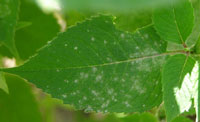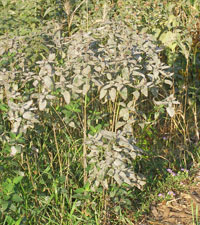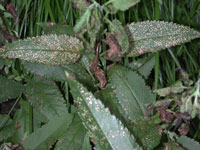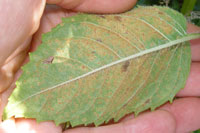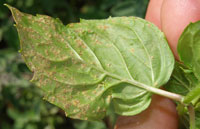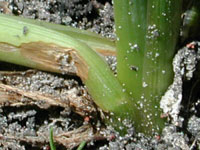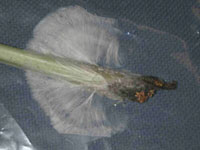Extension > Garden > Diagnose a problem > What's wrong with my plant? > Annuals and Perennials > Bee Balm (Monarda) > Spots on leaves
Bee Balm (Monarda) > Spots on leaves
1 of 4
Powdery mildew
Erysiphe cichoracearum
- Powdery, fluffy white spots and blothces on leaves, stems, and flower parts
- Tiny black round spheres may be visible within white spots late in the season
- Spots typically start on lower leaves but can spread to cover the entire plant
- Severely infected leaves may be completely covered in white or grayish white fungi
- In some cases, leaves become curled or twisted or turn yellow due to the infection
- More information on Powdery mildew
2 of 4
Fourlined plant bug
- Occurs May to early July
- Feeding causes brownish or sunken spot on leaves
- Nymphs are red or red and black; Adults are greenish yellow with 4 black stripes, 1/4 to 1/3 inch long
- More information on Fourlined plant bug
3 of 4
Rust
Puccina angustata and Puccinia menthae
- Small yellow spots that merge to form large yellow areas on upper side of leaf
- Dead brown blotches on severely infected areas
- Raised orange pustules on the underside of the leaves
- Powdery orange spores rub off of the underside of infected leaves and can be seen with a white tissue paper
- Spots typically start on lower leaves but can spread to cover the entire plant
4 of 4
Southern Blight
Sclerotium rolfsii
- Leaves turn yellow then brown from the edges inward and wilt
- The base of the stem may be brown or discolored
- Tiny tan to reddish brown hard spheres and white cottony growth can be seen at the base of infected leaves or in the soil around infected plants
- Often seen after warm wet weather




